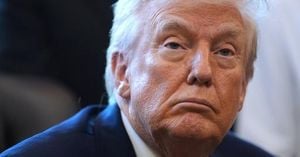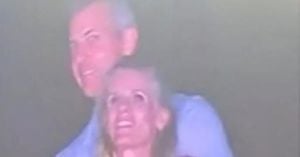Colton Herta’s journey from the heart of American open-wheel racing to the European motorsport scene is shifting into high gear, and the racing world is buzzing with anticipation. On September 3, 2025, Herta was officially announced as the Cadillac Formula 1 team’s test driver for their much-anticipated debut campaign in 2026. The nine-time IndyCar winner, who at just 25 years old has already become a household name in U.S. racing circles, will now set his sights on Formula 2 as his likely next step—an essential move in his quest for a full-time Formula 1 seat.
Herta’s move is as much about strategy as it is about ambition. While he’ll be supporting F1 veterans Sergio Perez and Valtteri Bottas at Cadillac, he’s not yet eligible to race or even deputize in a grand prix. The sticking point? The FIA’s Super License system. Despite his formidable IndyCar résumé, Herta is currently on 35 Super License points, just shy of the 40 required to compete in Formula 1. The points allocation system, which has long been a source of debate, awards more points to F2 drivers than their IndyCar counterparts—a disparity that’s shaped Herta’s career trajectory in recent years.
For Herta, this isn’t the first time the Super License system has put the brakes on his F1 dreams. Back in 2022, Red Bull attempted to sign him for AlphaTauri, but with only 29 points at the time—despite a third-place IndyCar championship finish in 2020 and consistent top-ten results—the FIA refused to grant an exception. Since then, Herta has added to his tally: third in IndyCar in 2020 (20 points), fifth in 2021 (8 points), tenth in 2022 (1 point), tenth in 2023, second in 2024 (30 points), and seventh in 2025 (4 points). However, the rolling three-year window for Super License points means that by 2026, he’ll have 34 points, as one from 2023 drops off. The math is clear: a strong season in F2 is the most straightforward path to F1 eligibility.
Why F2, and why now? The FIA’s points structure makes the answer obvious. In Formula 2, the top three finishers in the drivers’ standings are each awarded 40 Super License points—enough to unlock the F1 door. By contrast, IndyCar only grants 40 points to its champion, with second and third receiving 30 and 20, respectively. For Herta, finishing in the top eight in F2 next year would guarantee the points he needs. A ninth-place finish would complicate matters, but the American driver is aiming higher.
Herta’s switch to Europe and F2 has drawn widespread attention and support from within the Formula 1 paddock. Lando Norris, who raced alongside Herta in Carlin’s MSA Formula team in 2015 and later in British F3, was quick to praise his former teammate’s adaptability and talent. “It’s probably not difficult for him, because he’s good at jumping in all different types of cars and that’s something he’s done his whole life,” Norris said on September 4, 2025. “He’s an extremely talented driver and a guy I enjoyed a lot growing up with him in 2015.”
Norris didn’t stop there. He questioned the logic of forcing a driver of Herta’s caliber to prove himself in F2, suggesting that the IndyCar series deserves more respect—and more Super License points. “I think he’s probably capable of driving a Formula 1 car and driving it at an incredibly high level. He’s probably better than most other drivers that are in the ranks and coming up in F3 and F2 and stuff. So I don’t think [he should need to race in F2], if I was the boss,” Norris remarked. He added, “IndyCar I think is one of the toughest series in the world. I think it’s an incredibly tough car to drive... and the level of all these drivers is incredibly high.”
Oliver Bearman, who himself made the leap from F2 to F1 after two seasons, offered a nuanced perspective. While Bearman credited F1 testing as the most valuable preparation for racing at the pinnacle of motorsport, he acknowledged the benefits of Herta gaining F2 experience. “That will be interesting for sure,” Bearman said. “I wish him the best of luck, it will be really cool to see... Of course the level is very high in IndyCar, but to see him come to Europe and see how he gets on is going to be really nice.” Bearman noted the differences in racing styles and the challenge of adapting to the European single-lap qualifying format, but expressed confidence in Herta’s abilities: “He’s clearly a very good driver, so I’m sure he’ll get around it in no time.”
Oscar Piastri, the current F1 championship leader and a former F2 champion himself, also weighed in on the debate. Piastri emphasized the value of racing on F1 weekends, not just for the exposure but for the experience it brings. “Both have different purposes in some ways,” Piastri explained. “I think being on an F1 weekend, racing alongside F1, that’s an important thing. His situation is a little bit different because he’s obviously the Cadillac test driver already, so it’s not so much about getting yourself in front of the paddock and in front of eyeballs. I think definitely being on an F1 weekend feels quite different to the racing I did before I was on an F1 weekend, so I think that’s definitely important.”
Piastri also highlighted the limitations of a test-only role in F1, noting that the conditions and cars used in testing often differ significantly from race-day reality. “The F1 testing, obviously getting up to speed in an F1 car is an important thing, but that testing has a limit to its uses. The tires are not representative. You’re often doing it in winter or at times when the tracks are not that rubbered in. There’s not other cars around, the car’s old… There’s a lot of limits to it, but certainly getting up to speed in an F1 car and just getting your brain used to all the different things you can change, all the things and the speed at which things happen – I’m sure he’ll be fine, coming from Indy! – but there’s definitely purposes to both.”
For Herta, the move to F2 isn’t just a formality; it’s a calculated step toward realizing a dream that’s been years in the making. The American has come agonizingly close to F1 before, only to be thwarted by regulatory hurdles. Now, with the support of some of the sport’s brightest stars and a clear path laid out by the FIA’s points system, he’s closer than ever to breaking through.
The racing world will be watching closely as Herta embarks on his European adventure. If he can deliver in F2, he’ll finally have the credentials—and the points—to make the leap to Formula 1. For now, the spotlight is firmly on Herta’s next chapter, and the anticipation is palpable. One thing’s for certain: the road to F1 is never easy, but Colton Herta’s determination and talent just might see him across the finish line.




